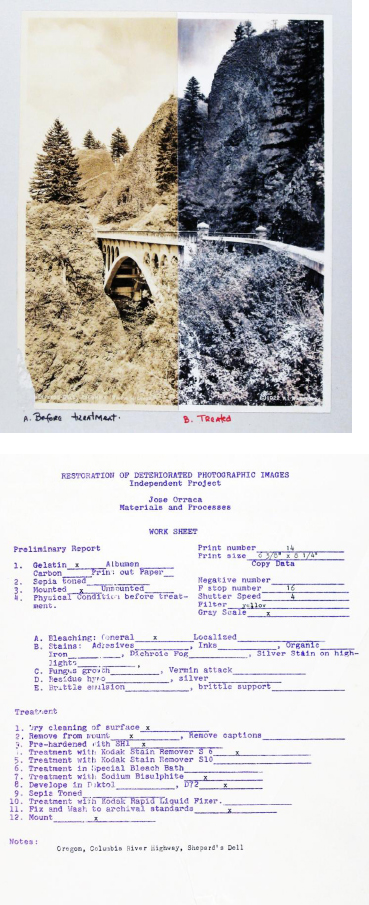
Topics in Photographic Preservation 2011, Volume 14, Article 12 (pp. 70-81)
Presented at the 2011 PMG Winter Meeting in Ottawa, Canada
Chemical treatment can be defined as any treatment that may alter the image forming material of a photograph. In practical terms, conservators often consider chemical treatment to be any treatment involving more than water, solvents, or the repair of physical deterioration. José Orraca’s first documented interest in chemical treatment occurred in 1971 - an independent research project at the Rochester Institute of Technology, Rochester, NY, for a Materials and Processes course. With this project as a starting point, this article documents José’s interest in, and use of chemical treatments, focusing on intensification. It then discusses how these treatments and José’s philosophy of conservation subsequently influenced his students.
Pau Maynes: Who do you think knows you best? If you wanted to talk to someone who had questions about you.
José: You mean other than my wife? (José laughs.) My students are always threatening to write a book about me.
(José Orraca interviewed by Pau Maynes. Recorded at José’s studio in Kent, CT, February 1, 2001.)
This is the beginning of that book, as written by one of your students.
I still remember my first “chemical” treatment of a photograph under José’s direction. It was 1979, during a post-graduate internship with José at the University of Delaware. I’m sure I’d used chemicals on photographs earlier, as I’d already worked with José on and off for a couple of years, but this was my first “chemical” treatment with genuine risk– if things went wrong, we would likely lose the image. But something had to be done so we pushed ahead – the “we” being José, Debbie Hess Norris, and myself.
I had a large gelatin developed-out portrait that had come through a fire. The edges of the print and the mount were charred, so there wasn’t much to be done with those. However, José believed we could do something about the massive silver mirroring which completely obscured the image. I don’t know whose idea it was to use acidified thiourea, but that’s what had been decided upon. I know thiourea was a suggestion from the photographic literature of the time and I know we had used it to remove tarnish from daguerreotypes. It was known to be a silver dissolver, so it would probably do something to silver mirroring. We decided to use a low thiourea concentration to slow down the silver removal – after all, we didn’t want to dissolve away the entire image. In the portrait went as we stood around watching to see what would happen. And sure enough, within 30 seconds or so, the silver mirroring was disappearing - quickly. We only waited another 5-15 seconds and pulled the image out of the bath and immediately immersed it in water to stop any further action. It had worked, and I remember breathing a sigh of relief. Another 30 seconds and the image would have vanished. Gone! That was a little too close for my comfort.
Today, I don’t recommend bathing gelatin prints in thiourea solutions. But at the time it seemed like a good idea. And we were lucky. Granted, I haven’t seen the image in over 30 years, but I wouldn’t be surprised if it is still in good condition. José had a way of making treatments like that work. He had a mind packed with all sorts of information, resulting in an abundance of ideas. Combine that with the fact that he was fearless, full of energy, loved a good argument and had a special relationship with his rosary beads, and you had the makings of an incredible conservator. That’s what it took to place our field on its feet, to establish photograph conservation as a legitimate discipline of its own.
As any of his students know, José had a few select chemicals that he returned to again and again. He was always pushing their merits even when most of us could not see what he was speaking about. In 1980, shortly after I finished my internship with José, I presented a paper at the AIC annual meeting titled “The Conservation of Albumen Prints.” In that paper I mentioned four of José’s favorite chemicals: Photo-flo, ammonium hydroxide, balanced alkali, and sodium bisulfite. To this list must be added another favorite, a chemical he became associated with during the early 1980’s - sodium borohydride.
José did not discover these chemicals or their use in photography. All of them were in the photographic manuals of the era. Many were used to remove stains or improve the appearance of faded images. Photographs were essentially considered expendable. After all, they could always be restored through duplication, or so experts believed. The concept of a photograph having unique characteristics that needed to be preserved was new, a concept that José helped to establish. José experimented with these various chemical procedures, modifying them for conservation use. Through his experiences he became familiar with the possibilities, limitations, and dangers of these treatments. This enabled him to determine which techniques would be appropriate for the up-and-coming field of photograph conservation.
Let’s have a quick look at each of these chemicals.
Photo-Flo, as most of us know, was a Kodak product, designed to help with the washing and drying of prints and negatives. José used it as a cleaning and wetting agent as well. As a wetting agent, it proved particularly helpful during the removal of photographs from their mounts.
José liked to use a 1-5% solution of concentrated ammonium hydroxide for surface cleaning. First he would clean the photographic surface with water. Then, if needed, he would clean the photograph with ammonium hydroxide - the stronger concentration on albumen prints, and the weaker on gelatin prints. He also used ammonium hydroxide to reduce certain stains and to swell and loosen stubborn mounting adhesives.
José used a 1 % solution of Kodak Balanced Alkali (sodium metaborate) to remove acidity in photographic papers, to reduce acid stains in prints and to lighten highlights. He liked it because it left no residues once washed out, its upper pH was limited, and it had a history of being used with photographs, particularly gelatin photographs.
José was especially fond of sodium bisulfite. It, too, had a history of use with gelatin photographs and was known to wash out readily. In my student years, José used this material to diminish yellowing in highlights (especially of albumen) and wash out some stains. Very few of his students believed this actually worked, but on occasion it would. In the 1980s José started using this chemical as a way to “toughen” albumen and gelatin binders, making them more resistant to physical damage and to reduce the amount of bubbling during chemical intensification. As Marion Hunter explained,” One of the problems with it is that it can be a very subtle chemical. For example the difference between an emulsion having problems in an aqueous solution or not can be very small. I find in those instances it can make a small but often significant difference. That is probably subjective though and almost impossible to prove.” (Hunter, Marion. January 4, 2011. Personal Communication. Charleston, SC)
A typical albumen treatment in 1979 would have included surface cleaning the image with weak ammonium hydroxide solution, removal of the print from the mount, washing the image in balanced alkali and water, backing with Japanese paper, and then readhering (probably with drymount tissue) the image to the treated original mount. The image would also most likely have been refixed with hypo. We might cringe at many of these techniques today, and would not recommend their use. However, in doing the research for this paper, I’ve had several of José’s students tell me that they still have the images they treated under his supervision using these chemicals, and that they look as good today as they did the day the treatment was completed some 25-35 years ago.
The chemicals I’ve just mentioned were all a regular part of José’s repertoire. However, the one treatment he’ll be remembered for the most will be his use of sodium borohydride to intensify faded photographs. His interest in intensification began early in his career. This is not surprising as intensification techniques were readily available in the photographic literature of the time (1960’s and early 70’s).
José’s first documented interest in chemical treatment occurred in 1971. (I believe this is the correct date, but dates and facts surrounding José are sometimes difficult to pin down.) In that year he undertook an independent research project at the Rochester Institute of Technology for a Materials and Processes course. Essentially this project experimented with the possibility of intensifying albumen prints, gelatin POP prints, and gelatin DOP prints. He would harden and wash faded prints, followed by bleaching in Kodak Stain Remover S-6 (a potassium permanganate, sulphuric acid solution). Then the print was washed in sodium sulphite, exposed to light, and developed in Kodak Developer D-72. Once redeveloped, the print was archivally washed. As can be seen in Appendix 1, he obtained an “A” from his professor. He documented the procedures using a check-off form, and would occasionally include duplication restoration of the image as well.
The treatments were generally impressive; most were quite successful at intensifying faded images. (See figures 1 and 2.) However, he did run into problems. Of the 16 images treated, three experienced partial emulsion loss (figure 3) and eight yielded uneven image tones. Also some of the resulting image tones were strange, particularly where intensification was followed with a toning bath. I believe these experiences led José to question the viability of many of the techniques found in photographic literature. My suspicion is that he decided these techniques were too unpredictable or too dangerous, and therefore not suitable for the field of conservation except under extreme conditions. As a result of experiments such as this, he turned to the field of paper conservation for more predictable treatment options. (See Appendix 1 for a listing of formulas and the treatment outline.)
Twelve years after these initial experiments, in 1983, Janet Lehr presented José with a faded LeSecq photograph. I’ll let him tell the story.
José: …The same thing with intensification. The way intensification came about…And people think that it had anything to do with that guy in Canada. It had nothing to do with them. I didn’t even know about it.
Whatever it was that…one of my students who is now in California, Bob Aitchison. When he was a student [1977-1978], we were, I was lecturing at the [Winterthur] museum, and we were just experimenting with some junky albumen prints, prints that were reproductions of works of art and that sort of thing. And this one had some stains, and I said, “Let’s just for the sake of it, so you will see what happens, bleach it.” Then, we immediately knew what would happen after that. As it happened I said, “Oooh.” We went and got it out of this bleach, but we have to stabilize it. Why don’t we use sodium borohydride? All of a sudden I put in borohydride and this print came back completely. It intensified it, because it reduced the silver again.
And so, twenty years after that happened [José’s time frame is wrong] …. One day when I was in New York, then client of mine, Janet Lehr, brought in this print – this size, of a tree. And it was a salted print. She said, “Can’t you do anything with it?” It was totally faded. It was a beautiful image.

Figures 1 and 2: An example of successful intensification with report.
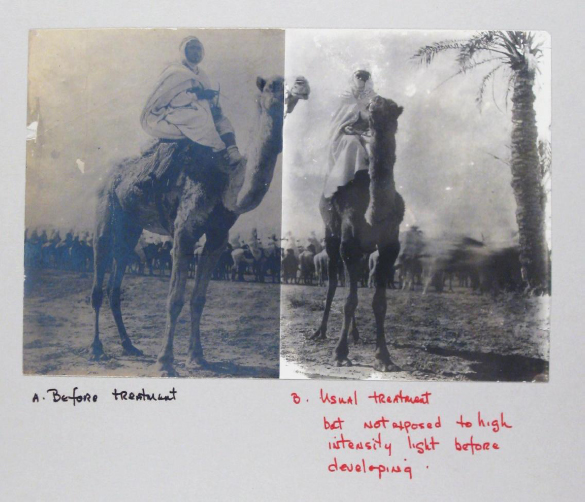
Figure 3: Treatment sometimes resulted in emulsion loss.
I remember trying to deposit silver, that didn’t work. I tried all this, but that didn’t work. It’s amazing that the print made it through all of that. Then I remembered what happened with Bob Aitchison. We had some borohydride and I put it in.
My God! I thought I would faint when I saw that print looking as it still does. She still has it in her apartment. It is absolutely gorgeous. (José Orraca interviewed by Alejandra Mendoza. May 9, 2009. Recorded at José’s home in Sharon, CT.)
José liked using borohydride because it didn’t add any silver to the image and it was reversible by fixing in hypo. He claimed that the idea to use borohydride was his own. And I believe that was true. However, José was not working in a vacuum. He himself mentioned borohydride use in paper conservation. Also, it had been published in photographic literature as a method of intensification, and he may have seen it there. Grant Haist in his 1979 Modern Photographic Processing, on page 40 in Volume 2 states, “The treatment of a faded print, even a mounted one, is possible if sodium borohydride is used.” My point is not to take anything away from José, but to show how integrated he was into the photographic culture of the time.
José’s next borohydride treatment was the one that created such a fuss in the art market and brought considerable publicity to the field of photograph conservation. After treating the Lehr photograph, he treated a Roger Fenton salt print of Bolton Abbey for Alan Klotz, which was then sold and shortly thereafter recognized as an image that had been intensified.
Treatments like intensification attract considerable attention, and José was not one to avoid controversy. Intensification became a very hot topic in the photographic market. After the sale of the Fenton photograph, the Association of International Photography Art Dealers (AIPAD) stated their opposition to intensification - its members were not to commission the use of intensification nor sell intensified prints. (Stretch, 1985) Yet, José continued to intensify images at the request of others till the end of his career.
While José’s influence on photographic treatments was considerable, of more importance was his impact on his “students,” a term he applied to his graduate students, apprentices, interns, and other adopted professionals. His teaching career began at the Cooperstown Conservation Program in 1975. From there he moved on to the University of Delaware conservation program in 1976. In 1981, when he established his private practice in New York City, he started taking on apprentices and interns, which he continued to do after moving to Kent, CT in 1991. In 1993 he initiated what became known as the Kent Workshops. This gathering of his students, met at the end of September for the next 14 years, until 2006. Their purpose was to provide a forum for discussion and experimentation among experienced photograph conservators – a place we could try out techniques such as intensification without the pressure of working on client’s objects.
All of these students, from Cooperstown to Kent, benefitted greatly from his teaching, incorporating much of his philosophy and some of his treatment ideas into their own careers. José loved treatment. He saw treatment as the characteristic that defined us as conservators, setting us apart from curators or registrars. He encouraged experimentation and the pushing of the limits of our profession. His desire was for us to increase the amount of knowledge in our field. He wanted us to take what we learned from him and apply that knowledge to our own treatment needs. Many of us have done this. Through his suggestions during our individual times with him, or the experimentation he promoted at the Kent Workshops, we developed our own procedures and philosophies, and performed our own research.
Several of us have on occasion intensified a photograph with sodium borohydride. We’ve also continued to develop such procedures as C. Fischer formula for reducing yellow discoloration on gelatin prints, or iodine treatment for the removal of silver mirroring.
José defined his philosophy of conservation in his 1991 article, “Developing Treatment Criteria in the Conservation of Photographs.” In it, José states that “treatment is at the core of our profession.” To give you some sense of José’s approach to treatment, I’m going to quote Marion Hunter.
[José’s treatments were] really quite simple in many ways. What sometimes made José different is he could often put combinations or try some approach that you hadn’t really considered and get a result that was different. That was his brilliance and his unpredictability which was wonderful and maddening at the same time. Measurements were often not precise. He sometimes mixed chemicals like he cooked - a little of this and a little of that. This would be too much salt in this dish and that would be too little in that dish. He worked the same with chemicals - too much for this object, too little for that. Sounds very unscientific, but his intuition was extremely good, and of course it was maddening trying to figure out what he was doing as his assistant. At those times, I considered him performing the ART of conservation versus the craft of conservation. A fine line but one he could cross in his prime with great regularity. Those were the times I felt very privileged to be working with him. (Hunter, Marion. January 4, 2011. Personal Communication. Charleston, SC)
José’s treatment procedures were important to the development of our profession. Yet, as Debbie Norris has said, José’s importance goes “far beyond one treatment exploration or another. It is his philosophical writings and ability (and nerve) to innovate and imagine a different future for the conservation field that continues to inspire many.” (Norris, Debra Hess. January 2011. Personal Communication. Art Conservation Department, University of Delaware, Newark, DE)
Let’s listen to José describe the characteristics of a photograph conservator. In this clipping he uses the term “photographer,” when he meant to say “photograph conservator.” In the background we here Sadako, his wife, working in the kitchen as always, and at the very end we hear his dog – sounds familiar to any of us who visited his home.
José: …Again, it’s those kind of things. You have to know a multitude of little tricks on it in order to be able to do it.
Alejandra: This expression you use, “We have to have the nerve to be able to do it,” do you think this is something we are born with, we learn, or we….
José: No, no. It’s not learned, it’s not learned. It’s born partly out of respect for the object. But you do have to have the courage to proceed, you know; if anything out of a sense of respect [for oneself]. How could you let a photograph overcome you when the answers should be in you head? It they’re not in your head you don’t even need to start treating.
So, when you – I used to think of this all the time when I had students. There are several things I had hidden in places where I wondered if one day someone would discover [the answer].
The photographer’s mind is like a computer. There’s all this information here. If you put in “gelatin print” it’s going to give you all these possibilities that should be popping into your mind at the moment. And then you look at the object and the piece of information already in your mind. You can make a choice; you can make the right choice.
But you have to have that multitude [of information]. A computer is filled with…when you think about Google, I don’t see how they get that much information in those little chips…(dog barking)… It should be in your mind. (José Orraca interviewed by Alejandra Mendoza. May 9, 2009. Recorded at José’s home in Sharon, CT.)
I’d like to thank many of José’s students for sharing their insights and experiences with me. Thanks to Paul Messier, Debbie Hess Norris, Marion Hunter, Carol Turchan, Barbara Lemmen, Tom Edmondson, Mary Kay Porter, Gawain Weaver, Robert Aitchison, and Valerie Bass. To many of us, José was more than a teacher. He was a mentor, a colleague, a great friend, and at times a beloved adopted father. José died on September 14th 2009; yet his incredible spirit and enthusiasm, his voice and his laugh are still missed.
Albright, Gary E. 2010. The Conservation of Albumen Prints (1980). In Issues in the Conservation of Photographs, ed. Debra Hess Norris et. al. Los Angeles: The Getty Conservation Institute. 297-305.
Haist, Grant. 1979. Modern Photographic Processing. Volume 2. New York: John Wiley and Sons.
Orraca, José. 1971. Restoration of Photographic Images. Special project for Materials and Processes course, Rochester Institute of Technology, Rochester, NY.
Orraca, José. 2010. Developing Criteria in the Conservation of Photographs (1991). In Issues in the Conservation of Photographs, ed. Debra Hess Norris et. al. Los Angeles: The Getty Conservation Institute. 586-590.
Stretch, Bonnie Barrett. 1985. Photo Intensification. American Photographer 15 (1), 22-24.
GARY E. ALBRIGHT
Paper and Photograph Conservator
Honeoye Falls, NY
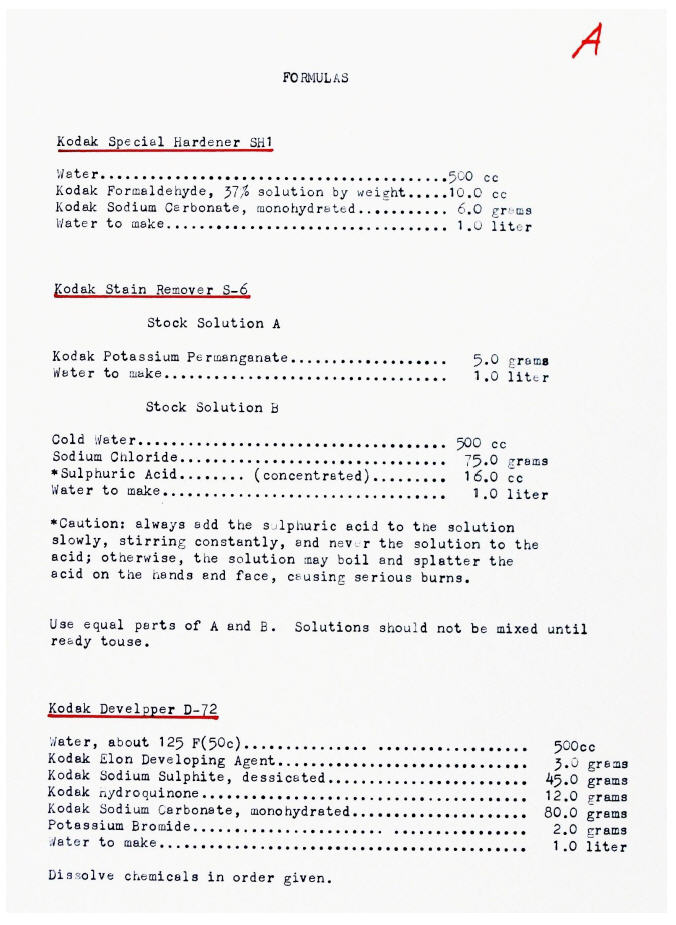
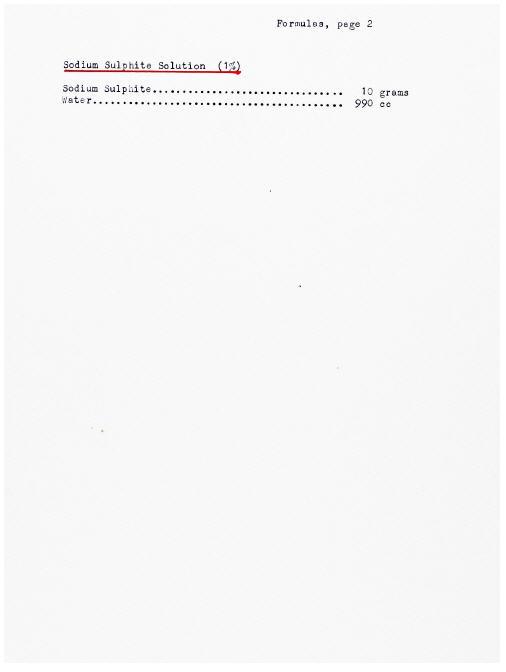
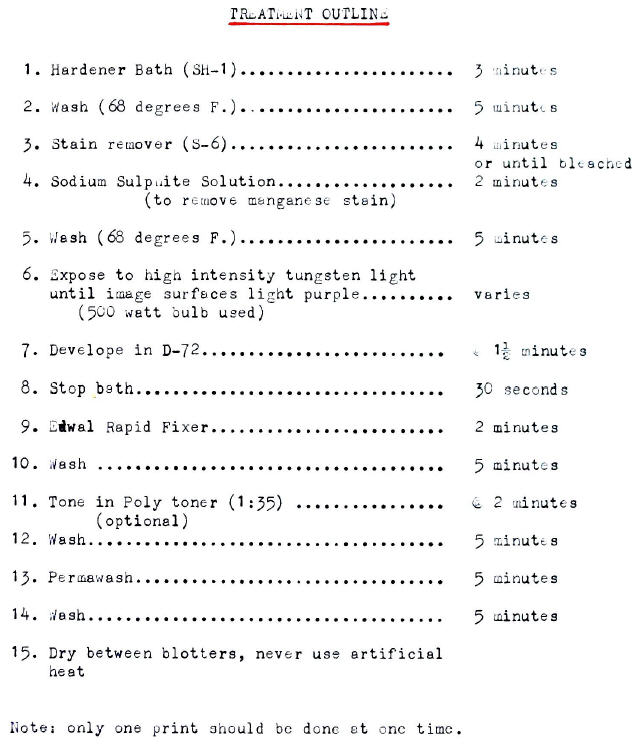
Papers presented in Topics in Photographic Preservation, Volume Fourteen have not undergone a formal process of peer review.